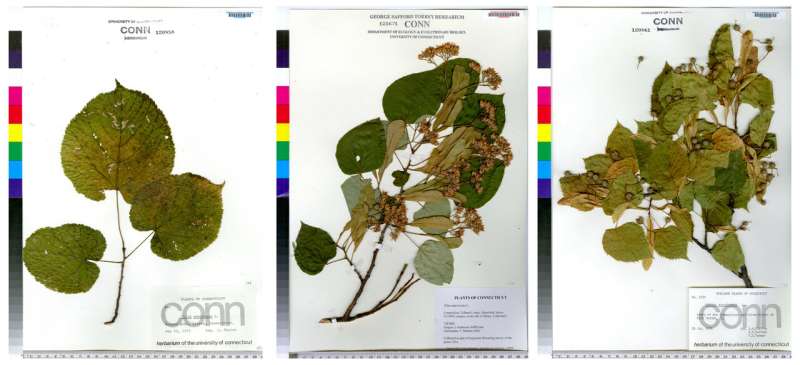Emerging frontiers in phenological research

As climate change looms, we urgently need to understand how ecosystems will respond. Plant phenology, or the timing of developmental events like flowering, offers a powerful lens to make sense of the changes we are likely to see. Phenology is both driven by climate and deeply impacts ecosystem functioning. The timing of trees leafing out, blooming, and fruiting are key events in ecosystems, and even small perturbations in this timing can have drastic, cascading effects across an ecosystem. A recent special issue of Applications in Plant Sciences titled "Emerging Frontiers in Phenological Research" presents several studies on the forefront of phenological research.
Traditional phenological studies involve highly trained botanists scoring plant phenological states for countless hours. A number of studies in this issue present tools for cutting down that laboriousness, allowing this research to scale up. As Dr. Elizabeth Ellwood, Research Fellow at La Brea Tar Pits and co-editor of this issue, explains, "Innovative tools presented here provide data users with improved methods for accessing, analyzing, and applying these datasets to timely research, including vegetation parameter estimates in climate models."
For example, the software package PhenoForecaster (Park et al., 2019) can predict flowering time of more than 2300 angiosperm species. "This lessens the need for years of fieldwork before analysis and enables other researchers, such as climate modelers, to readily work with phenology data," notes Dr. Ellwood. Similarly, imaging provided by PhenoCam (Richardson et al., 2019) can drastically reduce workload in phenological research by estimating phenology at the landscape scale.
Historical phenology data can provide insights into past climates that are otherwise difficult to reconstruct. As Dr. Ellwood explains, "Phenology, like weather, is quite variable, making it imperative to have long-term datasets to be able to discover patterns of change. Other data sources, for example observational records or data from satellite images, are unable to provide extensive historical information."
"The role of herbaria is foundational to historical records of plant phenology," Dr. Ellwood goes on to note. "Each herbarium specimen is unique and is direct evidence that a species existed at a certain place and time, and was collected in a certain vegetative and reproductive state. When taken together, herbarium specimens provide an unparalleled source of baseline, historical data." However, scoring phenological data from herbarium specimens is costly in terms of time and labor.
Fortunately, increasingly digitized herbaria collections (see Figure) make automated scoring practical, through the clever use of computer neural networks such as those introduced by Lorieul et al. (2019). These scores might be coarser than those created by manual scoring by trained botanists, but as Ellwood et al. (2019) show, for many applications and questions, the coarse phenological data produced by computer neural networks seem to produce only slightly weaker models than those produced with finer-scale, manually annotated data.
Similarly, as Pearson (2019) shows using simulated specimen data, finer-scale phenological data can be estimated from the kind of coarse scores produced by neural networks. "Modeling techniques, such as those employed by Pearson (2019), permitted the researcher to explore research questions through a methodology that was independent, though robust to, data on the physical specimens," explains Dr. Ellwood.
Another major obstacle to building large-scale phenological datasets is the difficulty of integrating scores from different sources. Phenology can be described in many ways, and phenological data from direct observation, landscape-scale imagery, and herbarium specimens can be difficult to aggregate and analyze due to these discrepancies. Fortunately, the Plant Phenology Ontology (PPO) provides a standardized, relational vocabulary to describe these phenological states. Brenskelle et al. (2019) updates this database to account for relationships between plants and the plant parts present in herbaria, making these data easier to integrate and paving the way for broad meta-analyses from multiple data sources.
Phenology closely tracks climate and also drives many ecological interactions, making phenological databases a crucial tool in understanding the ecology of climate change. The tools presented here offer computational approaches to allow phenology research to scale up. These big datasets are urgently needed to address the big questions of today. As Ellwood and colleagues note in this issue's introduction, "At landscape scale, even small changes in phenology can have substantial consequences."
More information: Elizabeth R. Ellwood et al, Emerging frontiers in phenological research, Applications in Plant Sciences (2019). DOI: 10.1002/aps3.1234
Journal information: Applications in Plant Sciences
Provided by Botanical Society of America





















